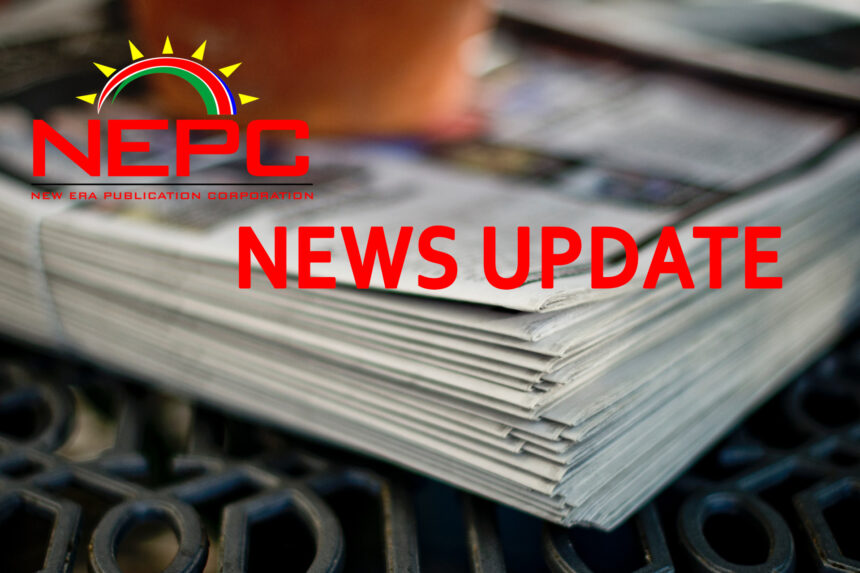Lahja Nashuuta
The fifth Boundaries Delimitation and Demarcation Commission has dismissed the Khomas regional boundaries’ delimitation and demarcation report, citing poor constituency consultation meeting attendances, inadequate information dissemination, and lack of public awareness on the boundary demarcations and delimitation exercises.
The region’s failure to consult communities was another big factor, and they have been given two weeks to consult the residents and stakeholders, and to then submit a comprehensive report which encompasses all inputs.
Commission chairperson, acting judge Petrus Unengu informed participants last week that regional councillors had failed to adhere to the terms and conditions of the commission, leading to the disqualification of their submission.
He said the region failed to provide the attendance register of the public consultation meetings, while in some constituencies, there was no quorum.
Unengu thus cautioned regional councillors not to plan for people, but to plan with people before they make their submissions.
The commission decided to rule out these submissions following a lengthy cross-examination of the regional recommendations submitted by Khomas governor Laura McLeod-Katjirua, and motivated by constituency councillors at a meeting attended by members of the public last Thursday.
Members of the public from various constituencies present brought to the commission’s attention that they were not consulted, with the majority expressing dissatisfaction with the manner in which the constituency councillors drew up the recommendations.
Some community members even accused the regional leadership of intentionally omitting them from the meetings, while some were only consulted at short notice.
Khomas chief regional officer Clement Mafila confirmed that the regional consultation on the Boundaries Delimitation and Demarcation will now be held after two weeks following consultations at the constituency level, on a day to be announced.
During the consultation, constituency councillor for Khomasdal Samuel Angolo informed the meeting that out of the constituency population of 67 211, only 10 people attended the meeting at the second attempt, while at the first meeting, no one showed up.
“It was a challenge bringing people to the meeting. Although we used all mediums of communication to invite the community to this meeting, nobody showed interest,” he stressed.
Samora Machel constituency councillor Nestor Kalola stated that out of the constituency population of 92 401, only 72 people attended their meeting.
“There is a culture of people not attending public meetings. I tried inviting people, but the turnout has always been disappointing,” he said.
Kalola cited a lack of public awareness and interest in the boundary’s demarcation as some of the contributing factors to the poor attendance.
On the constituency’s proposal, he informed the commission of the vision to waive a portion of the constituency to John Pandeni, expand the constituency boundaries up to the borders of Khomas and Otjozondjupa, as well as to split the overpopulated constituency into two constituencies, with the new constituency to be named the John Otto Nankudhu constituency.
Lydia Kanime, a resident of Samora Michael, welcomed the idea of having the constituency split into two, but emphasised that the significance of transparency and meaningful public engagement and consent should never be forgotten. She claimed that the majority of the residents are not aware of the constituency demarcation plan, while there is a lot of misinformation about the issue.
“It is important for the public, especially those residing on the proposed boundaries, to be informed for them to be able to be prepared to relocate,” she observed.
Demarcation proposals
McLeod-Katjirua informed the commission that the Khomas region’s inhabitants have agreed for the boundaries of the region to remain unchanged. However, there are proposals for the extension and condensation of some constituency borders to ensure all those people residing within the regional borders are included in the regional development plans and access proper service delivery.
She said the borders of the Khomas region’s constituencies need to be adjusted to ensure the equitable distribution of resources and services to the people.
The Namibia Statistics Agency’s recent Census Preliminary Report showed that the region housed 494 605 inhabitants.
“At the centre of this submission, the regional council is concerned with the service delivery to the inhabitants in the sectors such as land, education, health, water and sanitation, and safety. The improved service delivery will be realised, and no one will be left out,” McLeod-Katjirua stated.
She then informed the commission of the region’s plans to have the boundaries of the Windhoek East, Tobias Hainyeko, Moses Garoeb, Samora Machel and Khomasdal constituency stretched to the borders with other regions such as Omaheke, Otjozondjupa and Erongo.
She revealed that the region plans to expand the Tobias Hainyeko constituency until the borders of Khomas and Otjozondjupa, while Moses Garoeb, Khomasdal and Windhoek West will be extended to the borders of Khomas and Erongo.
The Windhoek East constituency’s boundaries along the B6 road to Gobabis should be extended to the borders of the Khomas and Omaheke regions, as well as along the B1 road to Okahandja until the borders of the Khomas and Otjozondjupa regions.
The region further proposed the reduction of the border of Windhoek Rural by waiving a portion of the constituency to the Windhoek West, Khomasdal, Samora Machel, Moses Garoeb, Tobias Hainyeko and Windhoek East constituencies.
The commission has until the end of June to finalise the regional consultations, and to submit a report to President Nangolo Mbumba. That report will be used as a guide to assist the Electoral Commission of Namibia (ECN) with the registration of eligible voters for this year’s elections.
-lnashuuta@gmail.com


